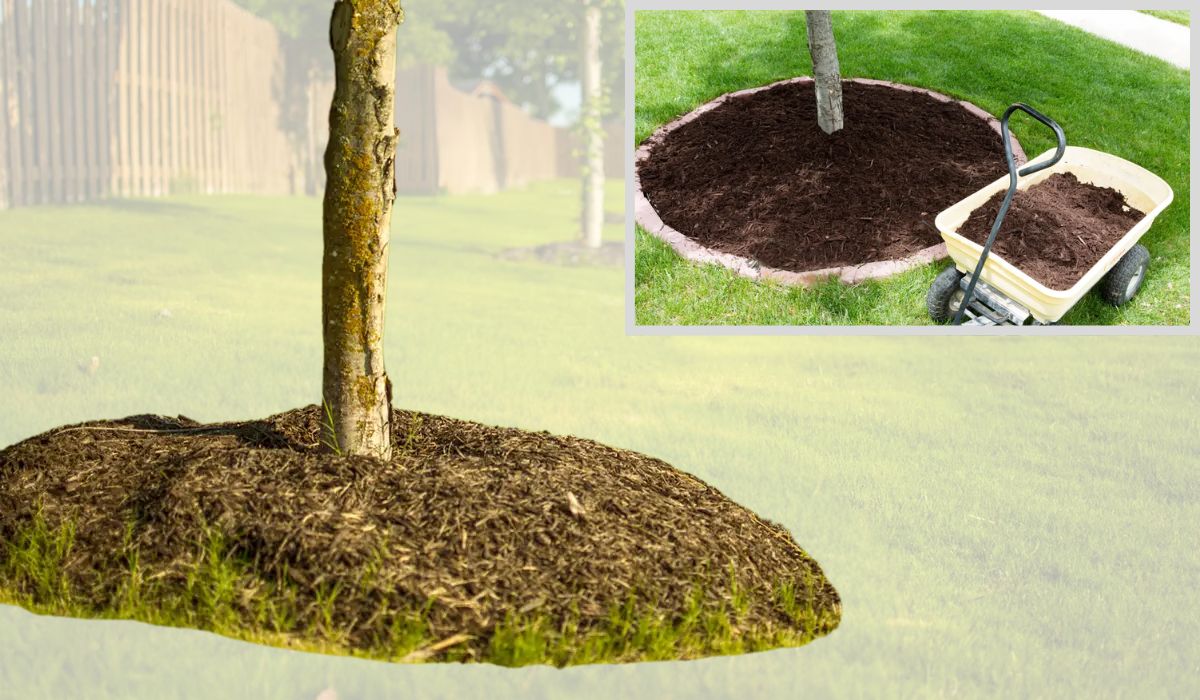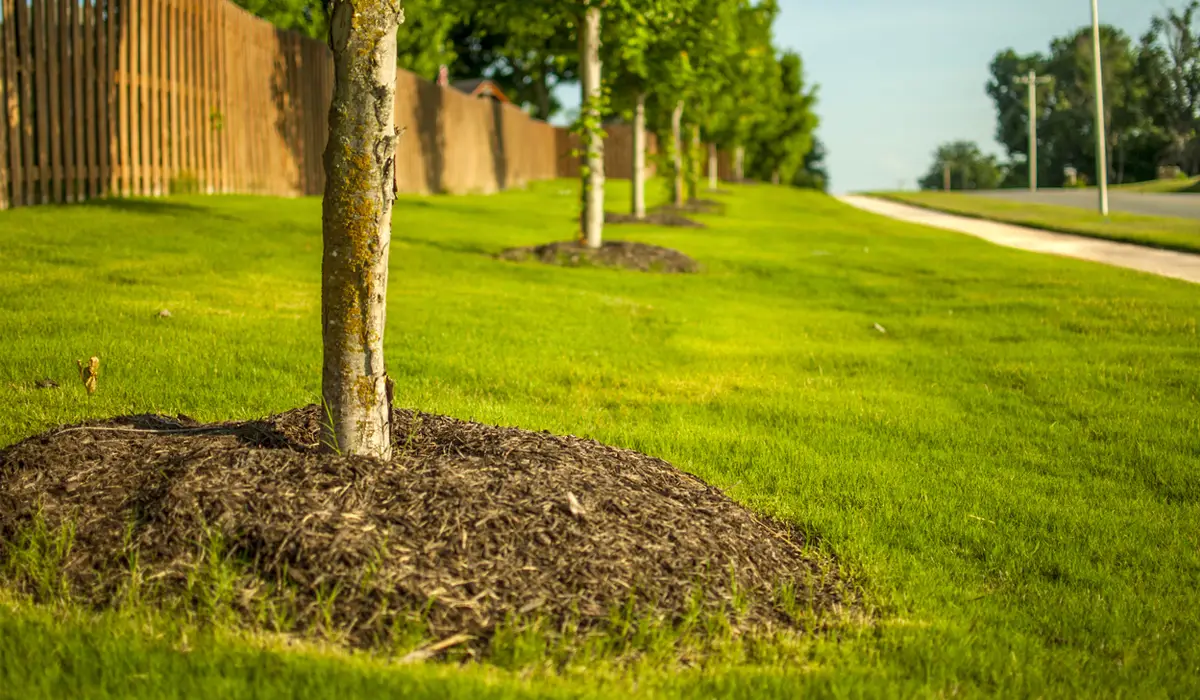
Effective Tree Mulching Techniques to Enhance Soil Health
Tree Mulching Techniques For Healthier Soil And Stronger Trees
Effective tree mulching techniques are essential for enhancing soil health and promoting robust tree growth. Mulching helps retain soil moisture, suppress weeds, regulate soil temperature, and improve soil structure. White Oak Tree Care specializes in a wide range of tree services designed to keep your landscape vibrant and healthy. By incorporating proper mulching practices, our expert team ensures your trees receive the best care possible.
Learn more about our services and how they can benefit your property. Reach out to us today for a personalized consultation or to request a quote. See what our clients have to say on our reviews page. If you have any immediate questions or need assistance, contact us at (630) 520-2690 and let us help you create a healthier, more beautiful landscape.
Differences Between Organic And Inorganic Mulches
Organic mulches are derived from natural materials like wood chips, bark, straw, and compost. These mulches decompose over time, adding essential nutrients back into the soil and improving its structure and fertility. In contrast, inorganic mulches such as gravel, rubber, or landscape fabric do not decompose. While they do not contribute nutrients to the soil, they are more durable and require less frequent replacement. Choosing between organic and inorganic mulches depends on the specific needs of your trees and the desired aesthetic of your landscape.
Types of Tree Mulching Techniques
Different techniques offer unique benefits and can be selected based on your specific needs and preferences. Here are three common techniques:
Sheet Mulching
This technique involves layering cardboard or newspaper on the soil and then covering it with a layer of mulch. It is effective at suppressing weeds and improving soil quality as the organic material decomposes. The paper layer helps prevent weeds from sprouting while allowing water and nutrients to penetrate the soil. Over time, the paper breaks down and adds organic matter to the soil, enriching it further.
Compost Mulching
Utilizing decomposed organic matter, compost mulching is excellent for enhancing soil fertility and structure. Compost provides a rich source of nutrients that promote healthy tree growth. Applying a layer of compost around your trees helps improve soil aeration and water retention, fostering a more robust root system. This technique also encourages beneficial microbial activity, which is essential for nutrient cycling in the soil.
Decorative Mulching
This involves using colored wood chips or other visually appealing materials to create an attractive landscape feature while still providing the benefits of mulching. Decorative mulching combines functionality with aesthetics, making your landscape both beautiful and healthy. These mulches come in various colors and textures, allowing you to match them to your garden design while still protecting your trees and improving soil conditions.
Benefits of Proper Tree Mulching Techniques
Proper tree mulching offers numerous advantages that contribute to the overall health and vitality of your trees and landscape. By understanding these benefits, you can make informed decisions about incorporating mulching into your tree care routine, ensuring your trees grow strong and healthy.
Soil Moisture Retention
Covering the soil with a protective layer significantly reduces evaporation. This barrier helps to conserve water in the soil, ensuring that it remains available to the tree roots for longer periods. For drought-tolerant tree care, this is especially beneficial as it helps maintain necessary moisture levels during dry spells. By keeping the soil consistently moist, this practice supports the overall health and resilience of your trees.
Soil Fertility Enhancement
Organic mulches, such as wood chips or compost, play a crucial role in nutrient cycling as they decompose. This decomposition process releases essential nutrients back into the soil, enhancing its fertility and promoting healthy tree growth. Mulching also complements tree fertilization efforts by providing a steady supply of organic matter, which improves soil structure and nutrient availability. This combination ensures that your trees receive a balanced and sustained nutrient supply.
Weed Suppression
A protective ground cover creates a physical barrier that inhibits weed germination and growth. By blocking sunlight from reaching the soil surface, it prevents weed seeds from sprouting, thereby reducing competition for water and nutrients. This mechanism of weed control not only simplifies garden maintenance but also positively impacts tree health and growth. With fewer weeds competing for resources, your trees can access more of the essential nutrients and water they need to flourish.
Temperature Regulation
Mulch acts as an insulating layer, protecting the soil and tree roots from extreme temperature fluctuations. During the summer, mulch keeps the soil cooler by shading it from direct sunlight, while in the winter, it helps retain heat, preventing the soil from freezing. This temperature regulation is vital for maintaining stable soil conditions throughout the year, which is beneficial for tree maintenance. Consistent soil temperatures help prevent root stress and damage, supporting healthy growth and development.
Integrating Tree Fertilization With Mulching
Combining fertilization with mulching creates a robust care strategy for your trees, promoting their health and longevity. This approach leverages the benefits of both practices, creating a healthier and more resilient landscape.
Importance Of Combined Practices
Using a protective ground cover improves the effectiveness of fertilization by maintaining soil moisture and reducing nutrient loss. Organic materials decompose slowly, releasing nutrients over time and providing a consistent supply to the roots. This combination ensures that the applied fertilizers are more efficiently absorbed, reducing wastage and promoting better growth. Additionally, the insulating properties help regulate soil temperature, creating a more stable environment for nutrient uptake.
How Mulching Improves The Effectiveness Of Fertilization
A ground cover layer helps retain the nutrients from fertilizers, preventing them from being washed away by rain or irrigation. This retention allows the roots to absorb nutrients more effectively, leading to healthier growth. Organic materials break down and add essential nutrients to the soil, working alongside fertilizers to enrich soil fertility. This synergy between ground cover and fertilization creates a nutrient-rich environment that supports vigorous growth.
Fertilization Techniques For Different Trees
Different species require specific fertilization techniques to meet their unique nutritional needs. For instance, nitrogen-rich fertilizers are beneficial for deciduous species, promoting lush foliage and strong growth. On the other hand, evergreen varieties might require a balanced fertilizer with equal parts nitrogen, phosphorus, and potassium. Recognizing the specific requirements of each species helps in selecting the right fertilization approach to ensure optimal health.
Tailored Approaches For Various Species
Each species has unique nutritional needs that must be addressed through specific fertilization techniques. For example, young saplings benefit from fertilizers high in nitrogen to support their rapid growth phase. Mature specimens might require a balanced mix of nutrients to maintain their established structure and health. Tailoring the fertilization approach to the age and type ensures that each receives the appropriate nutrients at the right time.
Optimal Timing And Frequency
The timing and frequency of fertilization are crucial for gaining the maximum benefits. Applying fertilizers in early spring supports new growth, while a second application in late fall helps prepare them for winter. Over-fertilizing can lead to nutrient runoff and environmental damage, so it’s essential to follow recommended guidelines. Regularly scheduled applications, adjusted for seasonal changes, ensure a steady supply of nutrients throughout the year.
Seasonal Recommendations For Fertilization
Seasonal changes significantly impact the effectiveness of fertilization. In the spring, applying fertilizers supports the vigorous growth associated with warmer temperatures and increased sunlight. During the fall, a different blend can help them store energy and strengthen roots for the upcoming cold months. Adjusting fertilization practices to match seasonal needs ensures they receive the right nutrients at the optimal times, promoting overall health and resilience.
Drought-Tolerant Tree Care And Mulching
Managing trees in dry climates requires specific techniques to keep them hydrated and healthy. Proper ground cover can significantly help in conserving water, which is very important during droughts.

- Selecting Drought-Tolerant Trees
Choosing species that do well in dry climates is essential for a successful landscape. Oaks, pines, and certain types of cedar are excellent choices as they can survive with less water. These species have deep root systems and use water efficiently, making them ideal for areas prone to drought.
- Mulching Strategies For Water Conservation
Using a protective layer on the soil helps retain moisture by reducing evaporation. Materials like wood chips or straw are especially effective. This approach not only saves water but also keeps the soil cooler and helps reduce weed growth.
- Monitoring And Adjusting Practices
Regularly checking your ground cover during droughts is important. If it starts to dry out or break down quickly, it may need to be replenished. Adjusting the thickness and type of material can help maintain its water-conserving properties.
Seasonal Tree Maintenance Programs
Effective maintenance programs are essential to keep your trees healthy throughout the year. Adjusting care techniques for different seasons can significantly impact tree health and soil quality.
Seasonal Mulching Adjustments
Different seasons require specific adjustments to ground cover methods. In the spring, apply a fresh layer to help retain moisture as temperatures rise. During fall, a thicker layer can insulate the soil and roots against the upcoming cold. These modifications help maintain optimal soil conditions throughout the year.
Importance Of Regular Inspections
Regular inspections are crucial to maintaining soil health and the effectiveness of ground cover. Check for signs of breakdown or excessive dryness, especially after extreme weather conditions. Regularly inspecting and addressing these issues ensures that the ground cover continues to provide its intended benefits.
Scheduling Mulching And Fertilization
Creating a year-round care calendar helps in planning and maintaining consistent care. Schedule applications in early spring to support new growth and in late fall to prepare for winter. This organized approach ensures that the soil and roots receive necessary nutrients and protection at the right times.
Boost Soil Health With Effective Tree Mulching Techniques
Integrating proper mulching into your plant care routine is a simple yet powerful step towards a healthier landscape. By adopting these practices, you can significantly improve the health and appearance of your garden. For expert assistance with mulching and comprehensive plant care, consider reaching out to White Oak Tree Care. Our professional services are designed to meet all your landscaping needs, ensuring your outdoor space remains vibrant and healthy.
Visit our website to explore our services, request a quote, or read our customer reviews for more information. For immediate support, give us a call at (630) 520-2690 and let us help you maintain a beautiful and thriving landscape.
